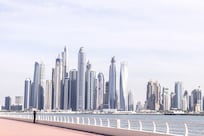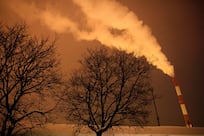There have long been complaints that the younger generation know little about the UAE's origins, culture, economy and the like. The blame is often directed at the Ministry of Education, which draws up the curriculum and issues text books for government and private schools.
Recently, I obtained the English version of the textbook Social Studies 2 - The United Arab Emirates, prepared by the Ministry's centre for curriculum and instructional materials development. The book is designed for use in Grade 6 classes and its introduction notes that it was issued "in response to the pressing need of the Private Education Sector".
I didn't expect to be very impressed, and I wasn't. The book reduced me to a state of near-apoplexy. It is out of date, full of spelling errors and poorly printed, so that the place names on some of the maps are unreadable. How on earth are students supposed to learn them? Perhaps worst of all, it has numerous errors. I won't cite them all, but let me give a taste.
The book says that it was first published in 1989 with its eleventh edition in 2007-08. There is no mention of any updates, although there should have been.
The very few statistics given are more than a decade old. Oil production figures date to 1996, with a pie chart of exports suggesting that Ireland imported roughly the same amount of UAE oil as Germany. That seemed odd, so I checked. The Irish Embassy tells me that no UAE oil was directly imported that year. Population figures are for 1997 and the statistics for children at school date from the 1997-98 academic year. You would think that the Ministry of Education could update their own statistics, wouldn't you?
The pre-Islamic history of the country is covered in four lines, including this: "5,000 years ago, ancient civilisations such as the 'Majan' and 'Melukha' flourished in the land of UAE." Actually, settlement began long before that, while Melukha is an old name for the Bronze Age civilisation of the Indus Valley. There's no mention of the Iron Age, the trade with Greece that was flourishing by about 300 BC, or the Christian monastery on Sir Bani Yas, certainly one of the key sites of the country's pre-Islamic history.
It's not much better when you get to the Islamic period. Two prominent figures who lived in what would become the UAE are mentioned, both from the early years of Islam, but no mention is made of the great 15th century navigator Ahmed bin Majid, who was born in Ras al Khaimah and is perhaps the country's best known historical figure, at least until the 19th century.
The section dealing with government structure is not very impressive either. It refers, for example, to the Union Supreme Council and the Union National Council. Isn't the Ministry of Education aware that these bodies are known in English as the Federal Supreme Council, or the Supreme Council of Rulers, and the Federal National Council? And what is "the Union Jurisdiction"? The judiciary?
As for the population, the book states: "Bani Yas, Al Qawassim, Al Manaseer and Al Dhawahir are some of the important tribes." Al Qawasim are a family, not a tribe. The other three are all found mainly in Abu Dhabi and Dubai. What of the Sharqiyin of Fujairah or the Na'im of Ajman to mention two others. And there is no mention at all of the presence of expatriate communities.
All of this irritated me intensely. What drove me to the brink of apoplexy, however, was the section dealing with government leaders. Beneath a picture of the President, Sheikh Khalifa bin Zayed, there is a three-paragraph section entitled: "The President and the Vice President".
It is worth quoting almost in full: "The Union Supreme Council elects the President and the Vice President. On December 2, 1971, His Highness Sheikh Zayed bin Sultan Al Nahyan was elected as the first president of the United Arab Emirates and one of his duties is [my emphasis] to represent the State.
"In 1990, His Highness Sheikh Maktoum bin Rashid Al Maktoum was elected Vice-prisedent [sic] and appointed Prime Minister after the death of his late father His Highness Sheikh Rashid bin Saeed Al Maktoum.
"In 2004, His Highness Sheikh Khalifa bin Zayed Al Nahyan was elected as the second President of the United Arab Emirates."
There is no mention of Sheikh Zayed's passing - surely the most important event in recent UAE history. Sheikh Mohammed bin Rashid is not included at all, though he succeeded his brother Sheikh Maktoum as Vice President and Prime Minister in January 2006, five years ago.
It is utterly unacceptable that the Ministry of Education is imposing this out of date, inaccurate and shoddy publication on schools. There is no excuse for the Ministry's failure at least to update the facts in the textbook, even if it lacks, after nearly 40 years, the skill to produce better teaching material.
Teachers from government and private schools have told me that they have been trying for years to obtain better textbooks. It is not surprising that many turn to other, more detailed and more authoritative sources of information for their students. If this book is representative of what the Ministry produces, it is not surprising either that so few students actually learn about the UAE at school.
The introduction concludes: "Any constructive comments or suggestions for future improvements are welcomed." My suggestion: Scrap it.
I hope that the Minister of Education will act swiftly to take the corrective action to deal with this disgraceful display of neglect towards our children.
Peter Hellyer is a consultant specialising in the UAE's history and culture





